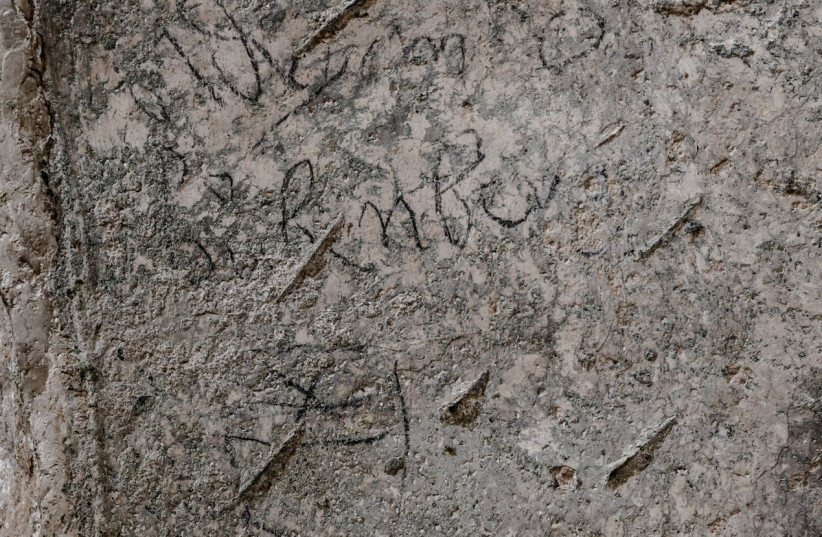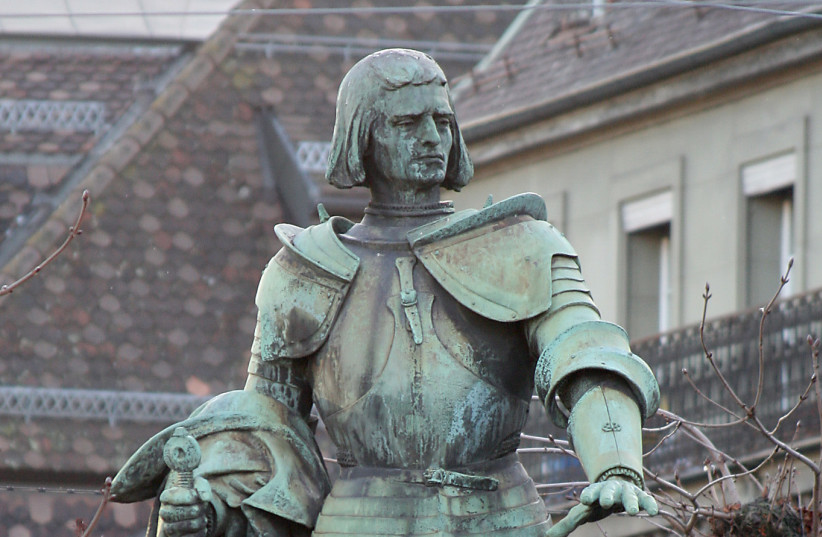 Graffiti of knight from Middle Ages discovered in King David’s Tomb
Graffiti of knight from Middle Ages discovered in King David’s Tomb
JERUSALEM POST STAFF
IAA researchers discovered an inscription bearing the name and family emblem of a Swiss noble who made a pilgrimage to Jerusalem in 1466.
.

A piece of graffiti bearing the name of Knight Adrian von Bubenberg along with his family emblem was discovered on the wall of King David’s Tomb on Mount Zion, in Israel’s capital of Jerusalem, the Israel Antiquities Authority announced on Thursday.
Found as part of the IAA’s research project documenting pilgrims’ inscriptions, the researchers discovered the graffiti bearing the name of the Swiss noble, who was dubbed a Knight of the Holy Sepulchre following his pilgrimage to Jerusalem in 1466.
More than 40 inscriptions belonging to both Christian and Muslim pilgrims, in several languages, were discovered during the IAA’s project.
The research results were announced in a conference titled New Archaeological Studies in Jerusalem and the Vicinity, jointly held with the Hebrew University of Jerusalem and Tel Aviv University on Wednesday.
Who was Adrian von Bubenberg?
Bubenberg, born in 1424, was labeled a Swiss national hero for military conquests across Europe, specifically in the Battle of Morat, fought as part of the Burgundian Wars of the 15th century.
He died in 1479 and was buried in the Bern Minster, the cathedral of Switzerland’s de-facto capital Bern, where he was mayor for three separate terms.
A bronze monument displaying the likeness of von Bubenberg can be found in the Swiss capital’s old city, in the Bubenbergplatz Plaza, named after the Middle Ages nobleman.

Why was his name inscribed on the walls of King David’s Tomb?
The IAA project leaders, Michael Chernin and Shai Halevi, explained that “in the Mamluk period [of control of the Land of Israel], the building complex adjacent to the traditional tomb of King David was owned by the monks of the Franciscan Catholic Order.
“The building served as a monastery and a hostel for the Western pilgrims, who left their mark on the walls,” they said, noting that “technological methods developed today enable reading the faded inscriptions.”
These technologies use multispectral photography, the IAA said. By using different wavelengths invisible to the human eye, these ancient inscriptions that have since faded and been erased can be viewed.
“Believers, pilgrims and visitors seeking to make contact with sanctified Jerusalem, left traces that the IAA researchers reveal and record on a daily basis,” according to authority director Eli Escusido.
“All these remains contribute to the fascinating picture,” he said: “Research carried out in Jerusalem embraces religions and cultures worldwide.”
Zawartość publikowanych artykułów i materiałów nie reprezentuje poglądów ani opinii Reunion’68,
ani też webmastera Blogu Reunion’68, chyba ze jest to wyraźnie zaznaczone.
Twoje uwagi, linki, własne artykuły lub wiadomości prześlij na adres:
webmaster@reunion68.com
